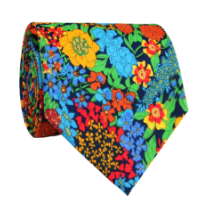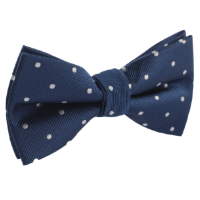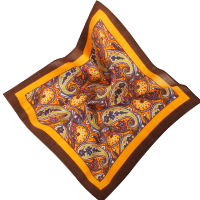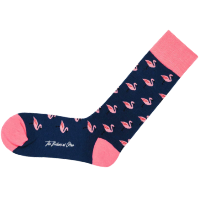The Fashion Evolution of Bow Ties: When and How They Made a Statement
The bow tie, often considered the more playful cousin of the traditional necktie, has seen a dramatic transformation over the years. Once relegated to formal events and academia, bow ties have transcended their boundaries and now make powerful fashion statements. From red carpets to street fashion, bow ties have evolved into a versatile accessory that can be adapted to a variety of styles and occasions. This evolution has been marked by changes in materials, patterns, and even the way they are tied.
The Origins: From Functional to Fashionable
The bow tie originated in the 17th century as a simple piece of cloth used by Croatian mercenaries to hold the shirt collar together. It didn’t take long for the French aristocracy to adopt this functional accessory and transform it into a fashionable item. By the 18th century, the bow tie had evolved into a style icon, setting the stage for what it would become—a statement piece in men’s fashion. 
The 19th Century: High Society’s New Favorite
During the 19th century, bow ties became more decorative. They were the favored choice for formal events and quickly garnered attention in high society. Alongside the traditional neckties and skinny ties, bow ties held their own, emerging as a symbol of sophistication and elegance. It was during this period that the variety of bow tie styles expanded, including the classic butterfly, the batwing, and the diamond point.
Roaring Twenties: A Symbol of Rebelliousness
The Roaring Twenties brought about a wave of change in fashion, and bow ties were no exception. They became smaller, more colorful, and started to be seen as a symbol of rebellion. In a world of traditional ties, the bow tie stood out, capturing the spirit of the time. It became associated with jazz musicians, artists, and other creative minds who dared to be different.
Post-War Era: The Return to Conservatism
After World War II, fashion saw a return to conservatism. Bow ties, though less flamboyant than before, retained their popularity as an accessory of choice for formal events and academic settings. It was during this period that the pre-tied bow tie was introduced, making it easier for men to don the accessory without the hassle of tying it themselves.
The Modern Era: Making a Statement
The bow tie in modern times has become a versatile fashion accessory. Whether you’re opting for a self-tie bow tie or the simpler pre-tied variants, a bow tie can significantly elevate your style. It is no longer restricted to formal events or academia; it is now a trendy accessory that can be worn on various occasions, from casual gatherings to business meetings. 
When to Wear a Bow Tie
Knowing when to wear a bow tie is crucial. While they are acceptable at formal events, bow ties can also be worn in casual settings to make a fashion statement. It all depends on the fabric and design of the bow tie as well as the ensemble you pair it with. For black-tie events, a black bow tie is a must. It should be made of silk and paired with a tuxedo. For white-tie events, a white bow tie is required.
In casual settings, you have more freedom to experiment with colors and patterns. A bow tie with a fun design can add a playful touch to your outfit. For business meetings, it is best to stick to classic colors like navy blue or black. However, you can opt for subtle patterns to add a touch of personality to your ensemble.
Accessorizing: The Bow Tie’s Best Friends
A bow tie never goes alone. From pocket squares to cufflinks and even tie bars, the right accessories can elevate your bow tie to new heights. A pocket square can add a pop of color to your outfit. Make sure it complements your bow tie but does not match it exactly. Cufflinks are a great way to add a touch of sophistication to your outfit. Choose a pair that complements your bow tie and other accessories. A tie bar is not necessary when wearing a bow tie, but if you choose to wear one, make sure it is subtle and does not overpower your bow tie.
The Return of the Bow Tie in Popular Media
From Hollywood to popular TV shows, the bow tie has made a glorious comeback, reinforcing its status as a modern fashion icon. Famous personalities such as Bill Nye, the Science Guy, and the 11th Doctor from Doctor Who have contributed to the resurgence of bow ties in popular culture. Additionally, fashion influencers and style icons have embraced the bow tie, showcasing its versatility and making it a must-have accessory for the modern man.
Conclusion
The journey of the bow tie from a mere piece of cloth to a powerful fashion statement has been remarkable. Whether you’re a seasoned bow tie wearer or a novice, understanding this evolution can provide you with a greater appreciation for this versatile accessory. From its origins as a functional piece of cloth to its transformation into a symbol of rebelliousness, conservatism, and finally, a modern fashion statement, the bow tie has truly come a long way. Today, it is a versatile accessory that can be worn on various occasions, from formal events to casual gatherings. With the right accessories, a bow tie can elevate your style and make a powerful fashion statement.





